9 Outdoor Living Essentials to Make the Most of Summer
Comfy patio furniture, portable shade and a barbecue can take relaxed living into the garden
With the right setup, outdoor spaces can become extensions of our living rooms. If you’re lucky enough to have a garden or patio, adding some comfortable furniture, a barbecue, and cushions and blankets can help to transform it into an inviting place to relax and unwind. Take a look at our list of outdoor living essentials and see if your garden could benefit from one or two new additions this season.
Need a pro for your home renovation project?
Let Houzz find the best pros for you
Let Houzz find the best pros for you
Outdoor table
Nothing beats enjoying a meal at an outdoor dining table on a warm evening. As with choosing any outdoor furniture, getting the scale right is key. As a general rule, allow at least 75cm from the edge of a table to the end of a patio or any other obstacle to allow space for a chair and circulation.
Nothing beats enjoying a meal at an outdoor dining table on a warm evening. As with choosing any outdoor furniture, getting the scale right is key. As a general rule, allow at least 75cm from the edge of a table to the end of a patio or any other obstacle to allow space for a chair and circulation.
Bistro tables (which range from around 60cm to 90cm wide) are often best for the smallest outdoor spaces and can provide a private seat for two.
If you have room to accommodate a more generous table to seat four to six people, choose from various table shapes and sizes to best suit your space and allow for clearance.
As with selecting any other piece of outdoor furniture, choose durable materials for your dining table and chairs, so they’ll stand up to the elements.
If you have room to accommodate a more generous table to seat four to six people, choose from various table shapes and sizes to best suit your space and allow for clearance.
As with selecting any other piece of outdoor furniture, choose durable materials for your dining table and chairs, so they’ll stand up to the elements.
Source of shade
If you have a sunny outdoor space and enjoy spending extended periods of time outside, you’ll appreciate some protection. Shade sources can take all forms, including trees, pergolas draped in vines, shade sails mounted on wires, retractable awnings and more.
Freestanding umbrellas can be the most effective option (and the most budget-friendly) if you want the flexibility of being able to move a spot of shade where you need it.
You might also enjoy 17 Attractive Ways to Create Shade in Your Garden.
If you have a sunny outdoor space and enjoy spending extended periods of time outside, you’ll appreciate some protection. Shade sources can take all forms, including trees, pergolas draped in vines, shade sails mounted on wires, retractable awnings and more.
Freestanding umbrellas can be the most effective option (and the most budget-friendly) if you want the flexibility of being able to move a spot of shade where you need it.
You might also enjoy 17 Attractive Ways to Create Shade in Your Garden.
Outdoor lighting
Nothing quite sets the mood in a garden like soft lighting. While installing an outdoor lighting system is a larger investment and takes the help of a lighting professional, adding freestanding solar-powered lights or battery-operated LED lights along pathways is something that’s easy to do on your own.
Hanging fairylights over a seating area adds instant atmosphere and is also easier than it may seem – even if you don’t have a pergola or tree branches just where you need them.
When purchasing any lights for your garden, make sure you choose ones specifically for outdoor use, which will often have seals to keep out moisture, among other advantages.
Remember to turn off all garden lights when you go in for the night, so it’s dark for nocturnal creatures.
Search for registered electricians in your area in the Houzz Professionals Directory.
Nothing quite sets the mood in a garden like soft lighting. While installing an outdoor lighting system is a larger investment and takes the help of a lighting professional, adding freestanding solar-powered lights or battery-operated LED lights along pathways is something that’s easy to do on your own.
Hanging fairylights over a seating area adds instant atmosphere and is also easier than it may seem – even if you don’t have a pergola or tree branches just where you need them.
When purchasing any lights for your garden, make sure you choose ones specifically for outdoor use, which will often have seals to keep out moisture, among other advantages.
Remember to turn off all garden lights when you go in for the night, so it’s dark for nocturnal creatures.
Search for registered electricians in your area in the Houzz Professionals Directory.
Barbecue
If you don’t have a barbecue, or you’d like to upgrade your current one, it’s helpful to know that they generally fall into categories based on fuel type and overall style. While gas-powered, covered barbecues and freestanding charcoal ones may be the most common types out there, don’t let that limit your imagination.
Maybe you’d like to try out cooking low and slow over a smoker, searing skewered meats on an uncovered Southeast Asian-style grill or half-grilling, half-roasting meats in a rotisserie.
Many barbecue fans swear by kamado-style cookers, such as the Komodo Kamado and Big Green Egg, which benefit from the radiant heat of their ceramic side walls.
If you don’t have a barbecue, or you’d like to upgrade your current one, it’s helpful to know that they generally fall into categories based on fuel type and overall style. While gas-powered, covered barbecues and freestanding charcoal ones may be the most common types out there, don’t let that limit your imagination.
Maybe you’d like to try out cooking low and slow over a smoker, searing skewered meats on an uncovered Southeast Asian-style grill or half-grilling, half-roasting meats in a rotisserie.
Many barbecue fans swear by kamado-style cookers, such as the Komodo Kamado and Big Green Egg, which benefit from the radiant heat of their ceramic side walls.
Cushions
Scattering a few colourful cushions on a neutral outdoor sofa or adding comfy seat cushions to wooden chairs can make an instant difference in boosting the style and comfort of an outdoor living space.
When choosing cushions, opt for those made for outdoor use with fabrics that have been treated to be water-repellent and to prevent fading with sun exposure. To keep cushions clean, come up with a plan for storing them at the end of the season, on rainy days, or generally when not in use.
Scattering a few colourful cushions on a neutral outdoor sofa or adding comfy seat cushions to wooden chairs can make an instant difference in boosting the style and comfort of an outdoor living space.
When choosing cushions, opt for those made for outdoor use with fabrics that have been treated to be water-repellent and to prevent fading with sun exposure. To keep cushions clean, come up with a plan for storing them at the end of the season, on rainy days, or generally when not in use.
Blankets
Blankets are practical for chilly evenings and can help round out the look of your outdoor living space.
Given that these aren’t left outdoors for long periods, choose among any blanket style you like (no special outdoor fabric required) or pull out ones you already have in the house to use as needed.
Those made of fabrics you can throw in the wash, such as cotton, linen and acrylic blends, may be more practical for everyday use than special-care materials.
Blankets are practical for chilly evenings and can help round out the look of your outdoor living space.
Given that these aren’t left outdoors for long periods, choose among any blanket style you like (no special outdoor fabric required) or pull out ones you already have in the house to use as needed.
Those made of fabrics you can throw in the wash, such as cotton, linen and acrylic blends, may be more practical for everyday use than special-care materials.
Serving tray
To reduce trips made back and forth to the kitchen, choose a serving tray that’s large enough to accommodate a couple of plates, glasses and dishes of nibbles. Those with a deep lip around the edge can help prevent anything from sliding off the tray while you move from house to patio.
To reduce trips made back and forth to the kitchen, choose a serving tray that’s large enough to accommodate a couple of plates, glasses and dishes of nibbles. Those with a deep lip around the edge can help prevent anything from sliding off the tray while you move from house to patio.
Outdoor tableware
Having a casual outdoor tableware set made from durable materials can help prevent stress over accidentally dropping a glass on the patio or having cutlery from your primary indoor set go missing.
While it’s easy to automatically think of plastic as a largely shatterproof material, particularly as a safe option for glassware around pools, consider wood or enamelware as long-lasting alternatives for plates and platters.
Tell us…
What do you like to have out in the garden to create a comfortable space? Share your ideas in the Comments.
Having a casual outdoor tableware set made from durable materials can help prevent stress over accidentally dropping a glass on the patio or having cutlery from your primary indoor set go missing.
While it’s easy to automatically think of plastic as a largely shatterproof material, particularly as a safe option for glassware around pools, consider wood or enamelware as long-lasting alternatives for plates and platters.
Tell us…
What do you like to have out in the garden to create a comfortable space? Share your ideas in the Comments.




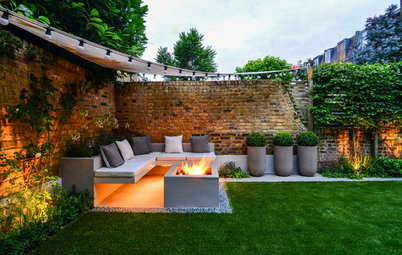
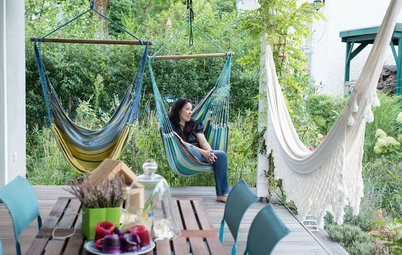

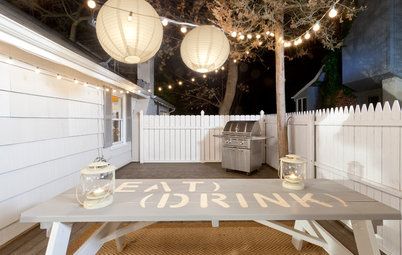
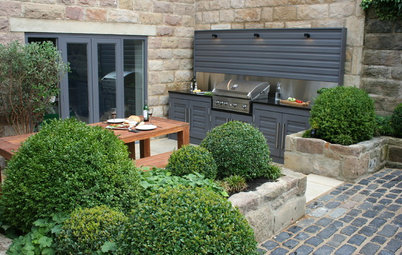

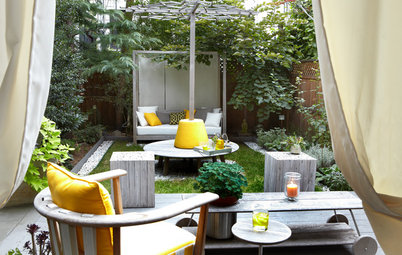
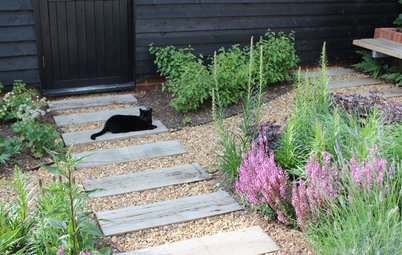
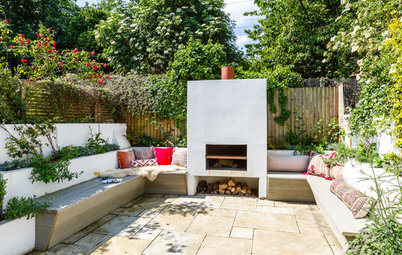
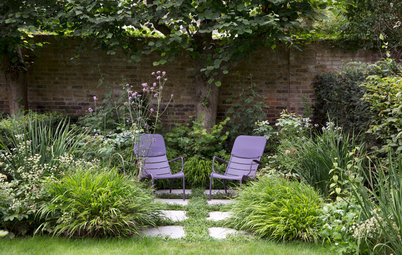
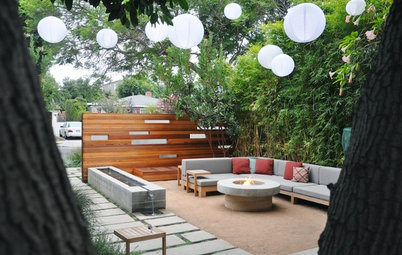
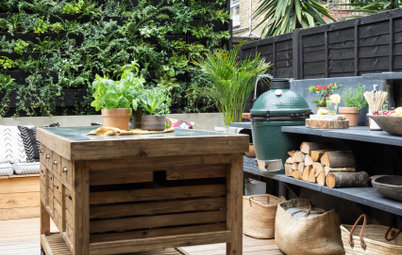
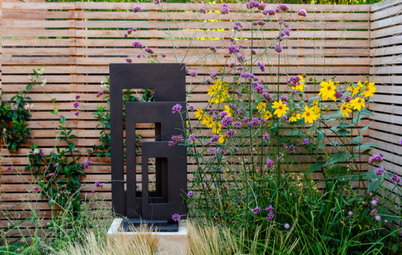
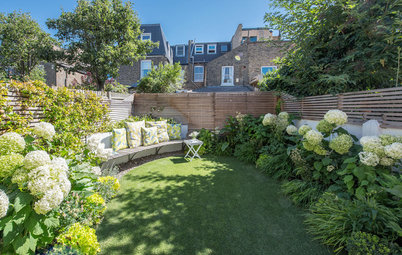

You wouldn’t buy an uncomfortable sofa for your living room, so keep those same standards when choosing seating for your patio. Your outdoor furniture needs will depend on your space constraints, climate and lifestyle.
Choose durable outdoor materials such as sustainably sourced teak, steel, powder-coated metal, resin wicker and anything that can handle exposure to sunlight, moisture and outdoor temperature changes. If you have the space for it, creating multiple seating areas – some for groups, others for quiet retreats – can make a garden more dynamic.